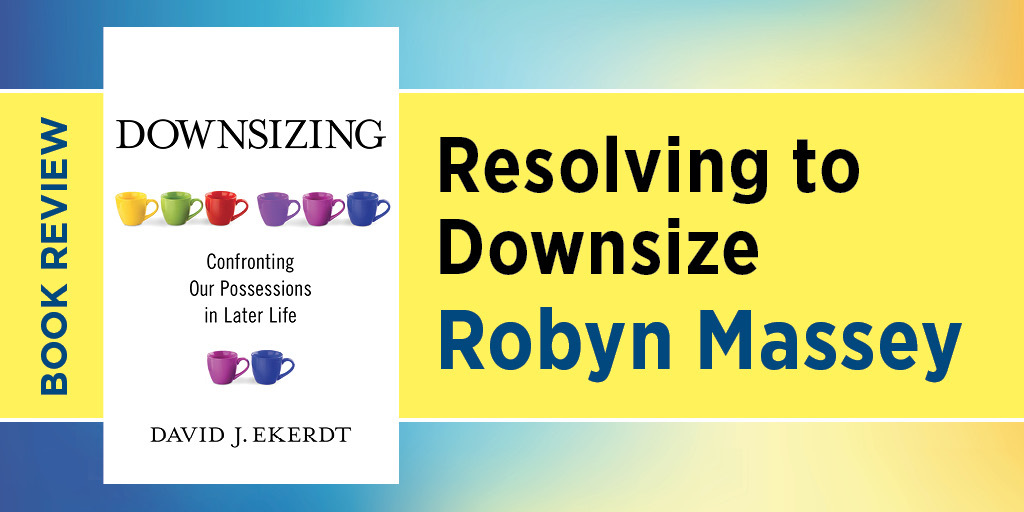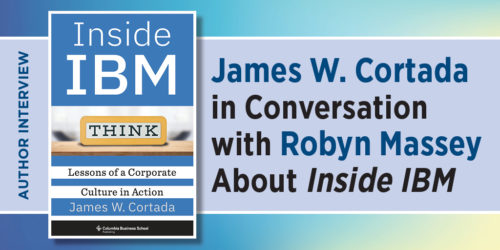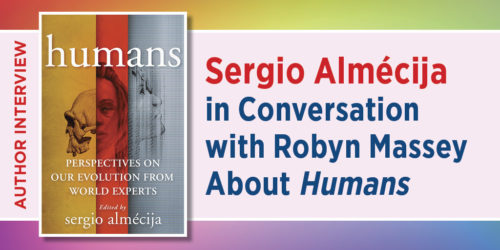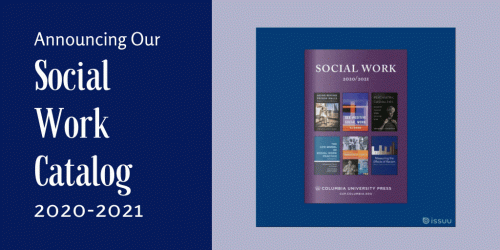Resolving to Downsize
Robyn Massey

As one of the many readers or viewers who has engaged with Marie Kondo’s advice on how to think about, purge, and organize possessions, I was attracted to a recent work, Downsizing: Confronting Our Possessions in Later Life, by David J. Ekerdt, professor of sociology at the University of Kansas. Ekerdt’s work focuses on end-of-life or fourth-age downsizing, which comes with moving from a multiroom “family” home to a single room. His work touches a nerve for any child of an aging parent. Moreover, given that possessions can accrue at any stage of life and can overwhelm, Ekerdt’s insights are relatable to anyone interested in accessing the good vibrations that a tidy, operational home can bring. The new year is a natural time to think about and activate best practices brought about by Ekerdt’s scholarship. Some thoughts follow.
The Material Convoy
Sometimes simply being able to name and frame a term can inspire ideas and provide the focus needed to manage tasks. As with any area of study, nomenclature is the difference between a passing interest and deeper engagement or even mastery over a subject. Ekerdt introduces the notion of the “material convoy,” defined as the domestic infrastructure of objects that accumulate in a household and are maintained in our home. This convoy numbers thousands of items that are invested with history, emotion, and care and “may even be feared.” There may be a few treasures among these; for example, for me, this would be a steer-headed brass boot jack from my late dad’s boyhood home, Ranch 101, Sun City, Kansas. The rest are a bulk of ordinariness. Indeed, Downsizing’s excellent introduction puts this into high relief. Managing this material convoy is a responsibility that requires us to confront our possessions. We can confront them now. Or we can confront them in later life. The latter choice runs the risk of saddling family members with this arduous responsibility. After reading this book, the logical question is: Why wait?
Keeping and Caring for Your Possessions
Why do we have possessions? After thinking about this a lot, I believe that possessions enable us in some way or educate, entertain, or inspire us. Possessions are either useful, such as tools, towels, and cooking utensils, or they provide enrichment, joy, or pleasure. Possessions also require care. This includes locating each item in a sensible place for convenient retrieval or maximum appreciation. There is a responsibility to keep each item safe, secure, clean, and in working order. This is not necessarily easy, but it feels doable and worthy.
Stuff and Clutter
As we talk about our material convoys, Ekerdt advises against calling them stuff because that tends to trivialize our possessions. Nor should we refer to our possessions as clutter (more on this later) because that tends to sound scolding. Better words are possessions, objects, items.
Divestment of Your Possessions
There are times when our possessions no longer serve us. We’ve outgrown them; they have been replaced by newer or better objects; or they are no longer sources of joy. Such objects present an opportunity to divest ourselves of them. This can be done in several ways, including:
Giving: Parting with your possessions as gifts.
Selling: Placing a notice on Craigslist, Gumtree, the RealReal, or other online marketplaces or having an in-person sidewalk sale.
Donating: Dropping a bag off at, say, Housing Works, or tapping into community conduits such as local social media “freecycle” communities. Thinking laterally and logically about conduits is an option, too. For example, after enquiring with a local typewriter repair shop about the cost of repairing a typewriter, I realized it was not worth it, so I asked the repair person if they’d like to take it. There was no money in it for me. However, knowing that its parts would be upcycled to make other typewriters work and getting its bulkiness out of my home were their own reward.
Divestment requires time, effort, and follow-through. How to get a possession from point A to point B can be daunting. It generally takes three months of hard work to downsize, according to Ekherdt, and this squares up with Kondo’s assessment, too. If possible, working together with a friend or family member might make the experience more pleasant and less burdensome.
Possessions and Time
Speaking of time, the notion of possessions and time is interesting to ponder. To my mind, items that support activities that enrich us are worthy of keeping and caring for, so long as our interest in engaging with these items endures.
Conversely, the notion of possessions “versus” time is another angle. More things equals more tidying and the potential for mess and jammed spaces. This can lead to opportunity costs. For example, cleaning that silver Champagne bucket versus the time and space that could be otherwise allocated is worth consideration. Would you rather have responsibility for regularly cleaning a tarnished bucket, or would you rather use that time to read, write, or see friends? Would you rather your eye catch on said bucket and your mind become beset with the guilt of needing to clean it, or would you rather have more empty, clean spaces, allowing the eye and mind to luxuriate? I own this silver bucket. I have decided I want to clean it because it is useful and I like it. However, if it becomes too much of a burden, to Housing Works it shall go. This item’s utility is in flux.
Moving Raises the Question
Disbandment, or moving from one home to another, is the event that urgently questions which possessions are to be kept and which divested. Without the impetus of moving, then, how is one to impose action in the absence of a move?
The passage from one year to the next is a good a time as any. My goal and vision for the new year is to address my personal space and “public” areas of the house to effect optimal organization. Less is more: curated objects, a place for every possession that is worthy of keeping. To my thinking, beauty and clean space are good for my mental health and better optimize my time and what I can bring to others and myself. Ugh.
Lest I’m starting to sound too proselytizing, let’s face it: downsizing requires grace. Ekerdt says it best when he notes: “One person’s clutter is another person’s comfort. If people want to go to their graves with every stick of furniture and scrap of clothing intact, I cannot try to persuade them otherwise. I assume that people know what they needed in the past and know what they need now. So although this book is not a work of advocacy, it will not shy away from pointing to what others see as the advantages of a smaller material convoy. There is no possession shaming here, however. [People] already perceive a problem—no need to pile on.”
On a personal note, this month, my family is navigating back to work, back to school, homework, SAT prep, sewing, bass, softball, health care, and my own mother’s fourth-age complexities. We’re reembarking on a busy time. This writing is as much about quelling my own anxieties as it is a quasi book report to capture what I learned from Ekerdt’s work, with the hope of spurring action. In solidarity with many others, no doubt, I value the opportunity to reflect on how to organize and situate myself—and my possessions—for the season ahead.
Robyn Massey is a publicist at Columbia University Press. Indebted to the friendship and scholarship of others, she is driven by curiosity and the desire to grow and learn. This month, she is inspired by David Ekerdt, the author of Downsizing: Confronting Our Possessions in Later Life and professor of sociology and gerontology at the University of Kansas. He is the editor in chief of the Encyclopedia of Aging (2002) and a coeditor of Consumption and Generational Change: The Rise of Consumer Lifestyles (2009), among other publications. In 2018, he served as president of the Gerontological Society of America.
Categories:Book ReviewSocial WorkSociology








